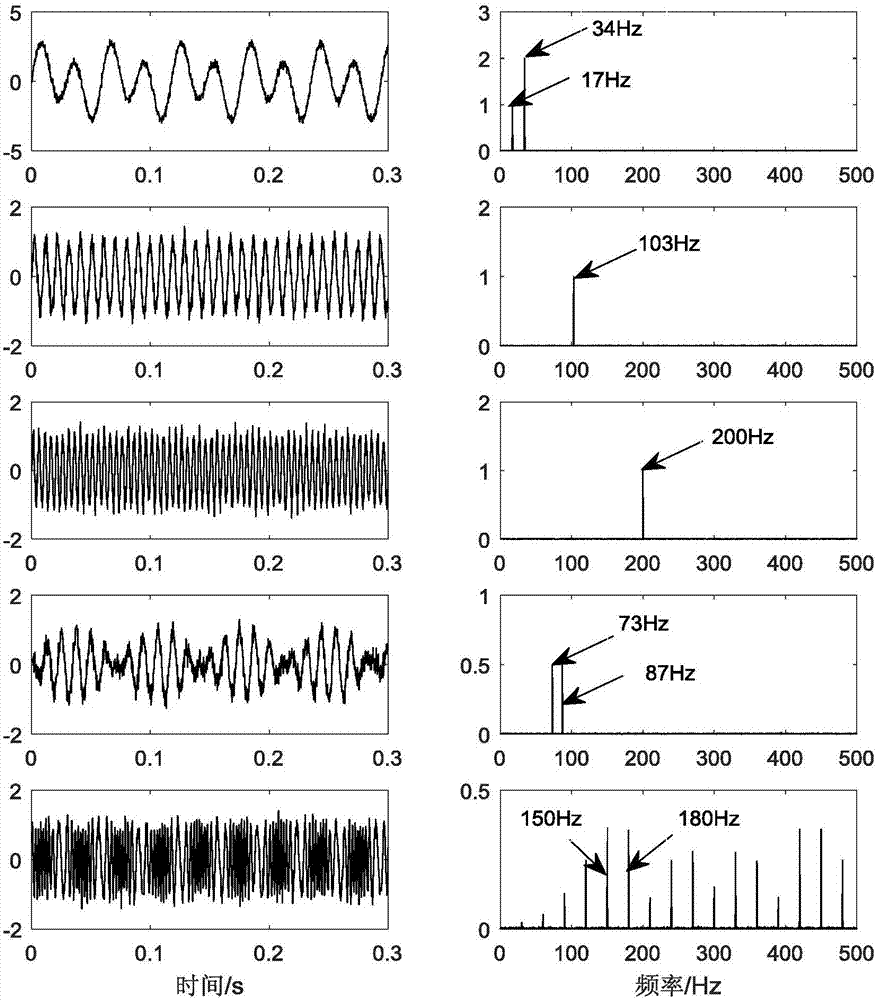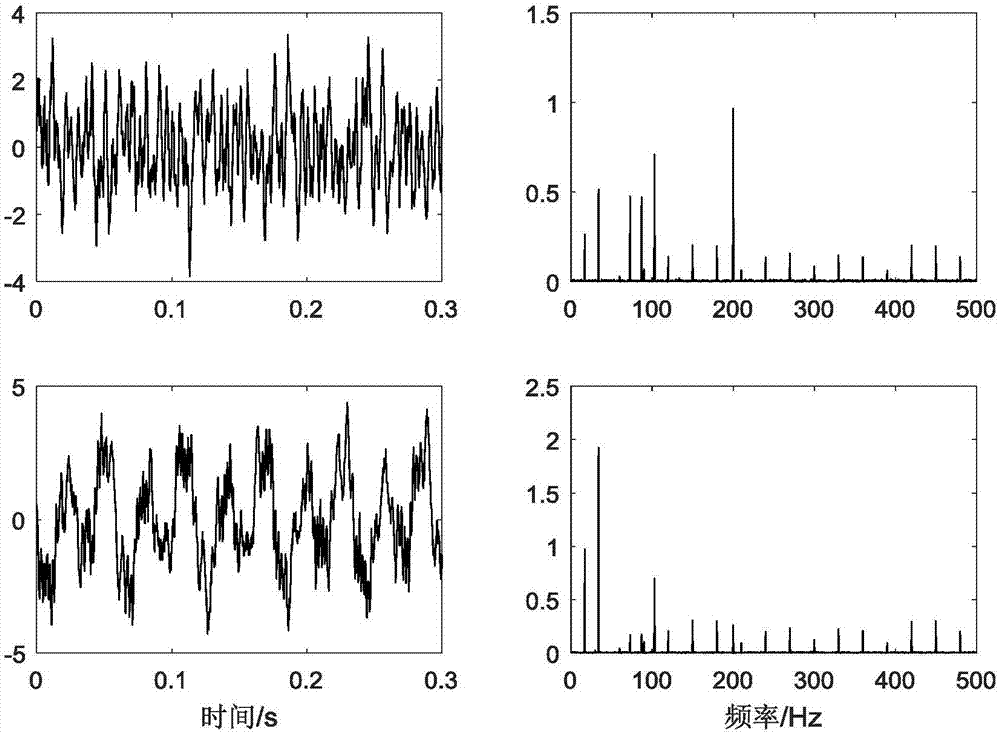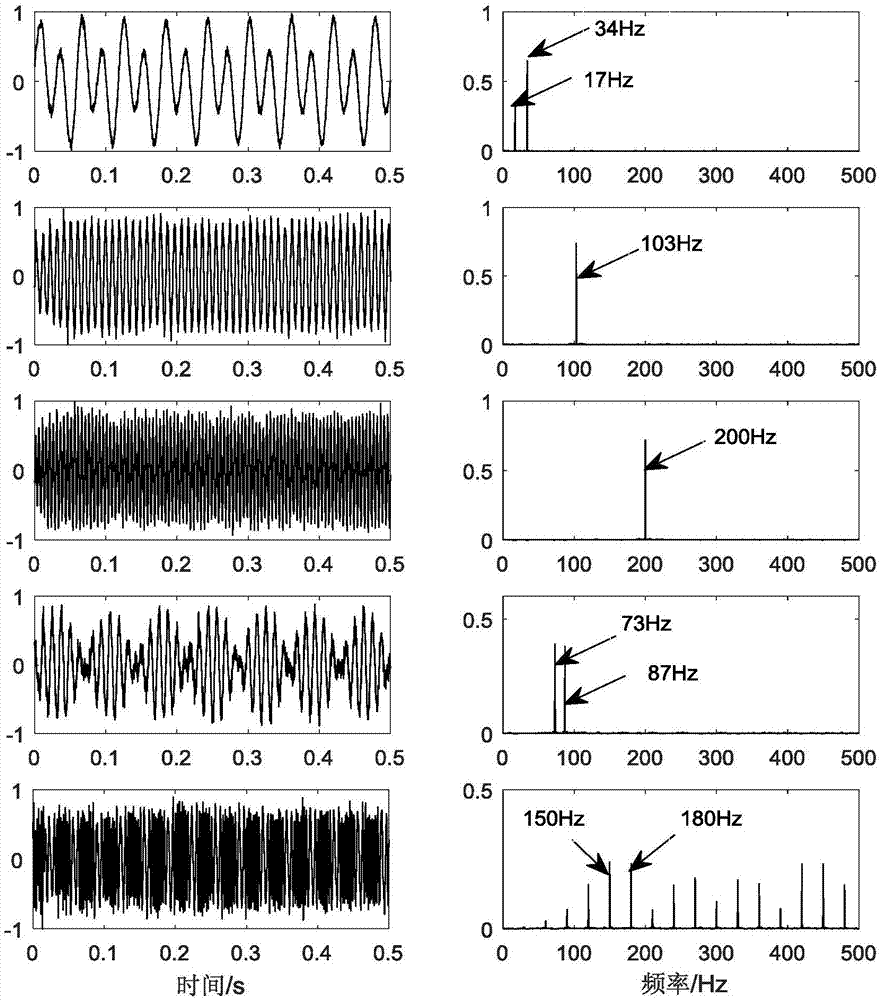Single source point detection-based underdetermined blind source separation method
An underdetermined blind source separation and single source point technology, which is applied to pattern recognition in signals, instrument, character and pattern recognition, etc., can solve the problems of long time consumption and difficult efficiency guarantee of sparse coding, and improve the extraction accuracy , wide application prospects, and the effect of improving detection efficiency
- Summary
- Abstract
- Description
- Claims
- Application Information
AI Technical Summary
Problems solved by technology
Method used
Image
Examples
example 1
[0034] In Example 1, five common fault signals in machinery are selected as the source signal, and its expression is shown in the following formula:
[0035]
[0036] Adding noise with a signal-to-noise ratio of 15dB to the source signal, the source signal waveform and its spectrum are obtained as figure 1 shown. It can be seen from the figure that the main characteristic frequencies of source signal 1 are 17Hz and 34Hz, the main characteristic frequencies of source signal 2 are 103Hz, the main characteristic frequencies of source signal 3 are 200Hz, and the main characteristic frequencies of source signal 4 are 73Hz and 87Hz. The main characteristic frequency of the source signal 5 is 300 Hz and its side frequency with an interval of 30 Hz on both sides. The mixing matrix selection is shown in the following equation.
[0037]
[0038] The observed signal waveform and its spectrum obtained through the mixing matrix are as follows: figure 2 shown. It can be seen from...
PUM
 Login to View More
Login to View More Abstract
Description
Claims
Application Information
 Login to View More
Login to View More - R&D
- Intellectual Property
- Life Sciences
- Materials
- Tech Scout
- Unparalleled Data Quality
- Higher Quality Content
- 60% Fewer Hallucinations
Browse by: Latest US Patents, China's latest patents, Technical Efficacy Thesaurus, Application Domain, Technology Topic, Popular Technical Reports.
© 2025 PatSnap. All rights reserved.Legal|Privacy policy|Modern Slavery Act Transparency Statement|Sitemap|About US| Contact US: help@patsnap.com



